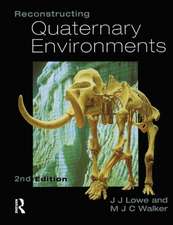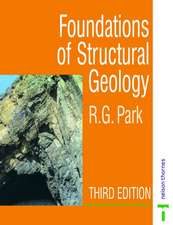Unravelling the Fukushima Disaster: Routledge Studies in Hazards, Disaster Risk and Climate Change
Editat de Mitsuo Yamakawa, Daisaku Yamamotoen Limba Engleză Hardback – 25 oct 2016
The aftermath of Fukushima exposed a number of shortcomings in nuclear energy policy and disaster preparedness. This book gives an account of the municipal responses, citizen’s responses, and coping attempts, before, during, and after the Fukushima crisis. It focuses on the background of the Fukushima disaster, from the Tohoku earthquake to diffusion on radioactive material and risk miscommunication. It explores the processes and politics of radiation contamination, and the conditions and challenges that the disaster evacuees have faced, reflecting on the evacuation process, evacuation zoning, and hope in a post-Fukushima environment.
The book will be of great interest to students and scholars of disaster management studies and nuclear policy.
Din seria Routledge Studies in Hazards, Disaster Risk and Climate Change
-
 Preț: 311.41 lei
Preț: 311.41 lei - 8%
 Preț: 390.50 lei
Preț: 390.50 lei -
 Preț: 287.86 lei
Preț: 287.86 lei - 9%
 Preț: 934.94 lei
Preț: 934.94 lei -
 Preț: 296.84 lei
Preț: 296.84 lei -
 Preț: 278.13 lei
Preț: 278.13 lei -
 Preț: 465.39 lei
Preț: 465.39 lei -
 Preț: 389.66 lei
Preț: 389.66 lei - 18%
 Preț: 138.22 lei
Preț: 138.22 lei -
 Preț: 384.86 lei
Preț: 384.86 lei -
 Preț: 413.33 lei
Preț: 413.33 lei -
 Preț: 389.66 lei
Preț: 389.66 lei -
 Preț: 385.62 lei
Preț: 385.62 lei - 18%
 Preț: 1000.89 lei
Preț: 1000.89 lei - 18%
 Preț: 893.58 lei
Preț: 893.58 lei -
 Preț: 416.22 lei
Preț: 416.22 lei -
 Preț: 389.38 lei
Preț: 389.38 lei - 18%
 Preț: 1000.27 lei
Preț: 1000.27 lei - 17%
 Preț: 272.50 lei
Preț: 272.50 lei -
 Preț: 385.08 lei
Preț: 385.08 lei -
 Preț: 385.02 lei
Preț: 385.02 lei -
 Preț: 400.10 lei
Preț: 400.10 lei -
 Preț: 420.76 lei
Preț: 420.76 lei -
 Preț: 383.17 lei
Preț: 383.17 lei - 19%
 Preț: 272.06 lei
Preț: 272.06 lei -
 Preț: 453.53 lei
Preț: 453.53 lei -
 Preț: 286.20 lei
Preț: 286.20 lei - 18%
 Preț: 1001.84 lei
Preț: 1001.84 lei - 15%
 Preț: 475.62 lei
Preț: 475.62 lei - 18%
 Preț: 895.32 lei
Preț: 895.32 lei - 17%
 Preț: 272.64 lei
Preț: 272.64 lei
Preț: 1002.60 lei
Preț vechi: 1222.68 lei
-18% Nou
Puncte Express: 1504
Preț estimativ în valută:
191.84€ • 200.84$ • 158.74£
191.84€ • 200.84$ • 158.74£
Carte tipărită la comandă
Livrare economică 05-19 aprilie
Preluare comenzi: 021 569.72.76
Specificații
ISBN-13: 9781138193819
ISBN-10: 113819381X
Pagini: 194
Ilustrații: 56
Dimensiuni: 156 x 234 x 16 mm
Greutate: 0.52 kg
Ediția:1
Editura: Taylor & Francis
Colecția Routledge
Seria Routledge Studies in Hazards, Disaster Risk and Climate Change
Locul publicării:Oxford, United Kingdom
ISBN-10: 113819381X
Pagini: 194
Ilustrații: 56
Dimensiuni: 156 x 234 x 16 mm
Greutate: 0.52 kg
Ediția:1
Editura: Taylor & Francis
Colecția Routledge
Seria Routledge Studies in Hazards, Disaster Risk and Climate Change
Locul publicării:Oxford, United Kingdom
Public țintă
Postgraduate and UndergraduateCuprins
List of figures
List of tables
List of contributors
Preface and Acknowledgments
Introduction
Mitsuo Yamakawa, Katsumi Nakai, and Daisaku Yamamoto
1 Shaky ground: the geophysical dynamics and sustained seismicity of the 2011 Tohoku Earthquake
Yosuke Nakamura
2 Outline of an invisible disaster: physio-spatial processes and the diffusion and deposition of radioactive materials from the Fukushima nuclear accident
Kencho Kawatsu , Kenji Ohse, and Kyo Kitayama
3 Place stigmatization through geographic miscommunication: fallout of the Fukushima nuclear accident
Takashi Oda
4 Living in suspension: conditions and prospects of evacuees from the eight municipalities of Futaba District
Mitsuo Yamakawa
5 Displacement and hope after adversity: narratives of evacuees following the Fukushima nuclear accident
Naoko Horikawa
6 How safe is safe enough? The politics of decontamination in Fukushima
David W. Edgington
7 Decontamination-intensive reconstruction policy in Fukushima under governmental budget constraint
Noritsugu Fujimoto
8 Living with contamination: alternative perspectives and lessons from the Marshall Islands
Sasha Davis and Jessica Hayes–Conroy
9 Radioactive contamination of forest commons: impairment of minor subsistence practices as an overlooked obstacle to recovery in the evacuated areas
Hiroyuki Kaneko
10 Refusing facile conclusions and continuing to tackle an aggregating disaster
Mitsuo Yamakawa and Daisaku Yamamoto
Index
List of tables
List of contributors
Preface and Acknowledgments
Introduction
Mitsuo Yamakawa, Katsumi Nakai, and Daisaku Yamamoto
1 Shaky ground: the geophysical dynamics and sustained seismicity of the 2011 Tohoku Earthquake
Yosuke Nakamura
2 Outline of an invisible disaster: physio-spatial processes and the diffusion and deposition of radioactive materials from the Fukushima nuclear accident
Kencho Kawatsu , Kenji Ohse, and Kyo Kitayama
3 Place stigmatization through geographic miscommunication: fallout of the Fukushima nuclear accident
Takashi Oda
4 Living in suspension: conditions and prospects of evacuees from the eight municipalities of Futaba District
Mitsuo Yamakawa
5 Displacement and hope after adversity: narratives of evacuees following the Fukushima nuclear accident
Naoko Horikawa
6 How safe is safe enough? The politics of decontamination in Fukushima
David W. Edgington
7 Decontamination-intensive reconstruction policy in Fukushima under governmental budget constraint
Noritsugu Fujimoto
8 Living with contamination: alternative perspectives and lessons from the Marshall Islands
Sasha Davis and Jessica Hayes–Conroy
9 Radioactive contamination of forest commons: impairment of minor subsistence practices as an overlooked obstacle to recovery in the evacuated areas
Hiroyuki Kaneko
10 Refusing facile conclusions and continuing to tackle an aggregating disaster
Mitsuo Yamakawa and Daisaku Yamamoto
Index
Notă biografică
Mitsuo Yamakawa is Professor of Economic Geography at Teikyo University and Extraordinary Professor of Fukushima Future Center for Regional Revitalization (FURE) at Fukushima University.
Daisaku Yamamoto is Associate Professor of Geography and Asian Studies at Colgate University, New York, USA.
Daisaku Yamamoto is Associate Professor of Geography and Asian Studies at Colgate University, New York, USA.
Descriere
The aftermath of Fukushima exposed a number of shortcomings in nuclear energy policy and disaster preparedness. This book gives an account of the municipal responses, citizen’s responses, and coping attempts, before, during, and after the Fukushima crisis. It explores the processes and politics of radiation contamination, and the conditions and challenges that the disaster evacuees have faced, reflecting on the evacuation process, evacuation zoning, and hope in a post-Fukushima.











